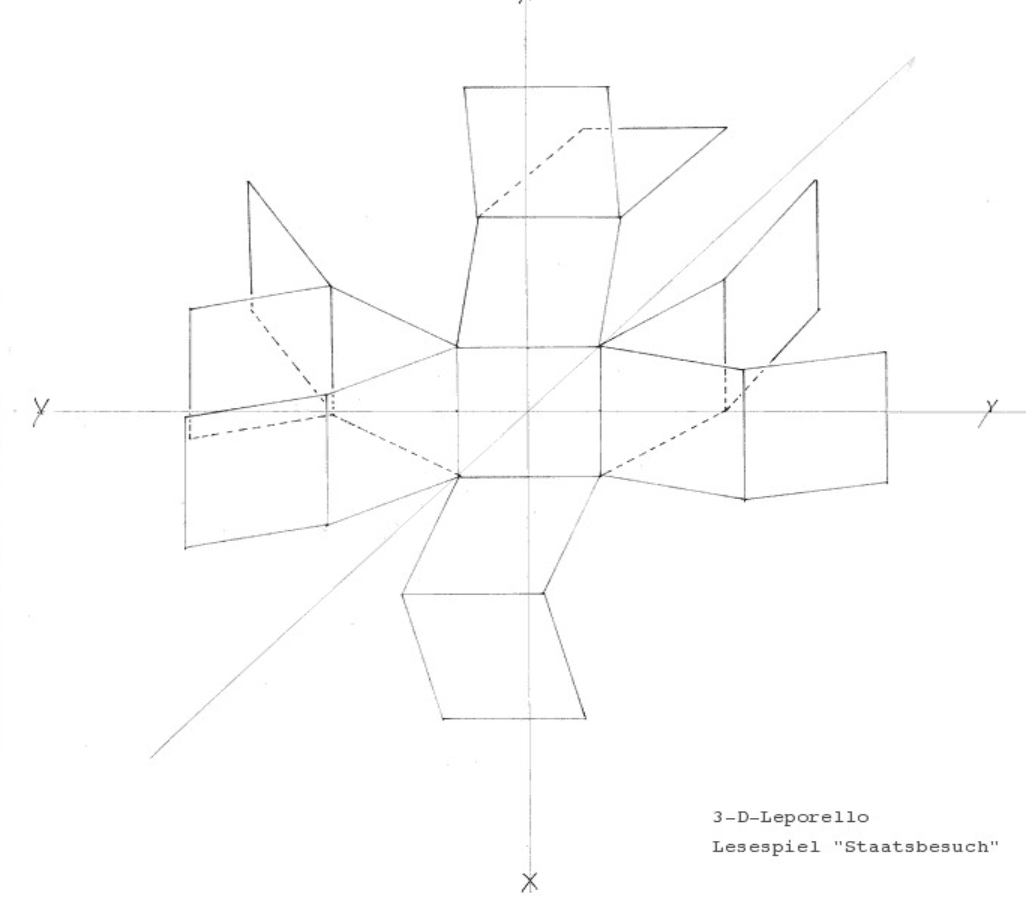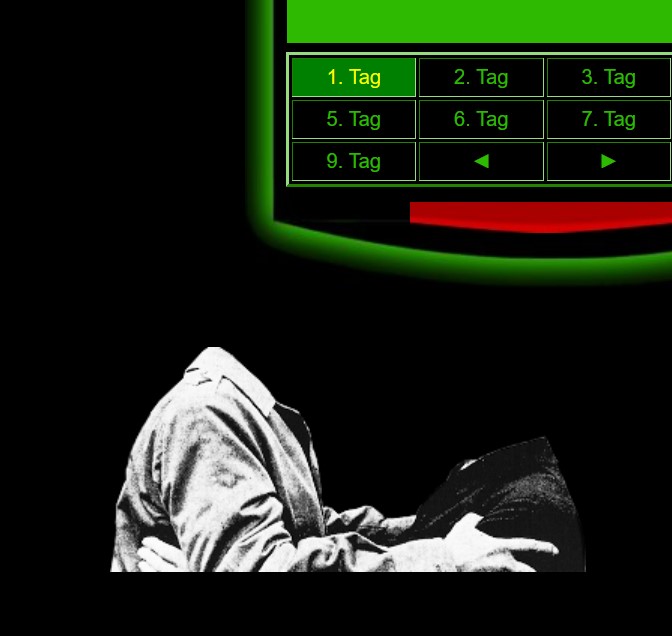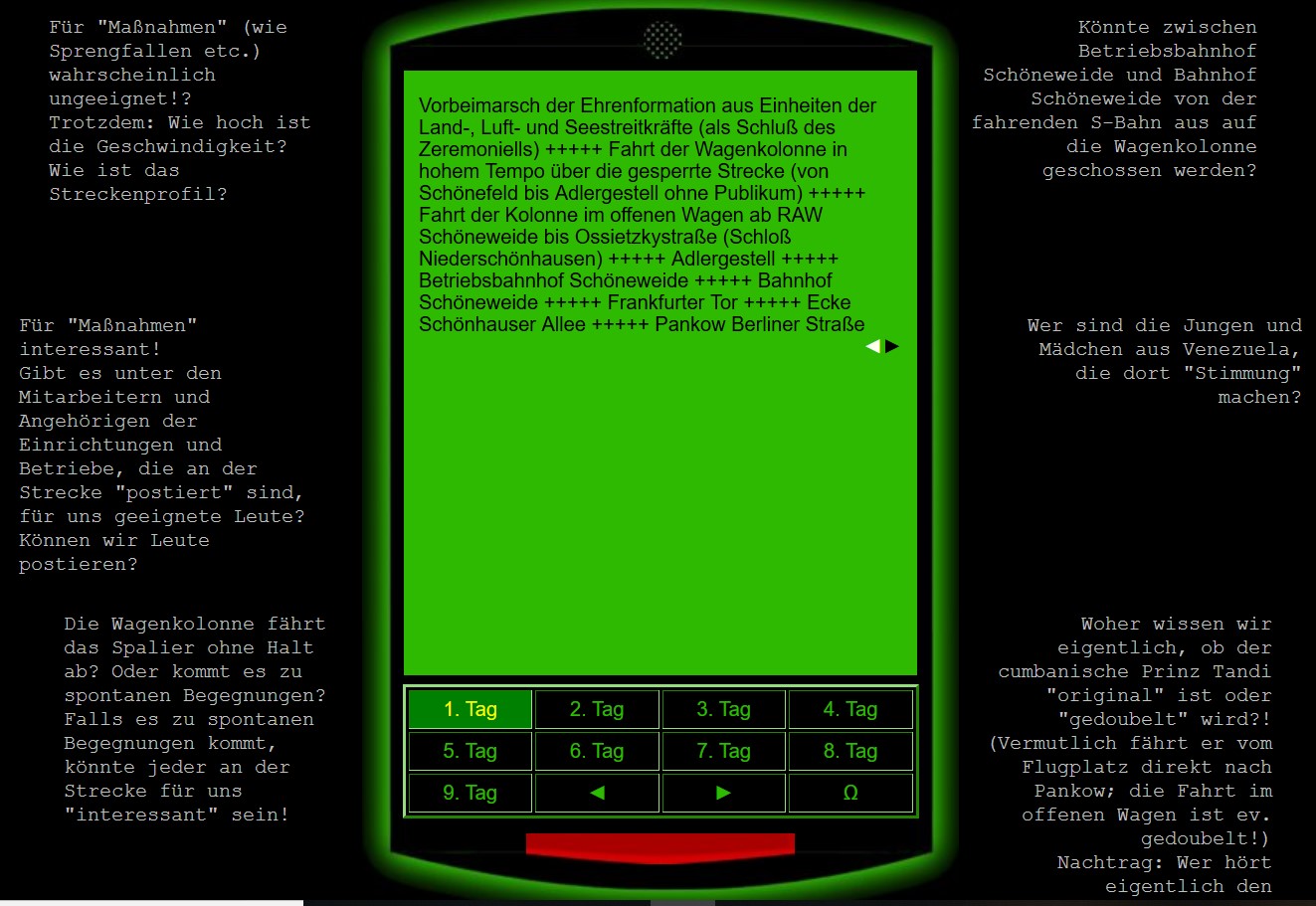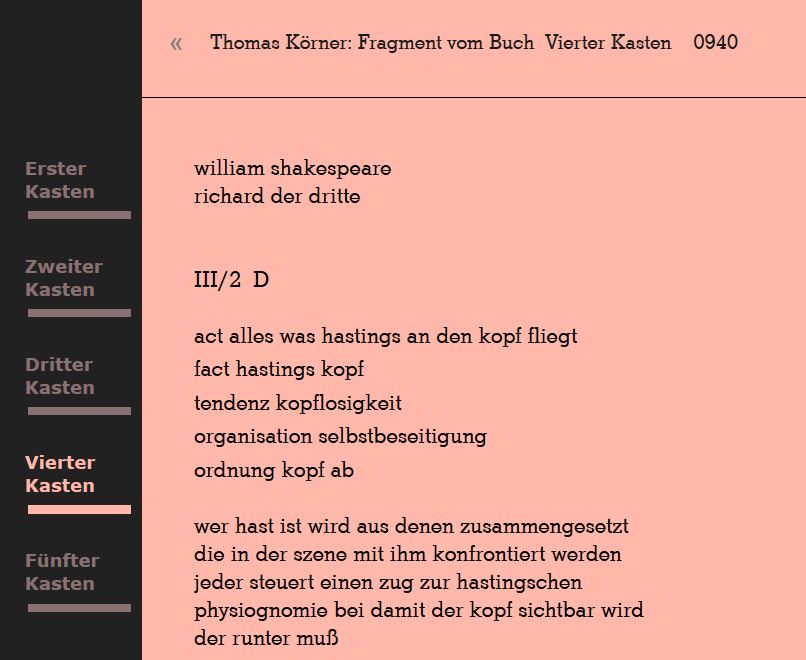The manuscript model DOSSIER is the graphical guide to play the Reading game of the State visit. Körner has alienated the Fidel Castro Visit to the GDR in June 1972 into the fictive story about the Cumban prince Tandi. In addition, he fancifully and ingeniously incorporated the talks of the secret services of various nations. The unfolding directions (more than four!) of the Leporello embody the voices of the secret services, as Körner explains in the manuscript model:

Körner adds to his explanations of the model:

Actually this reading game can be understood as a performance of his ensembling-idea, as the author explains in his model under Zum Stoff:
By writing the text, while reading the newspaper, I got into playing like gambling, the situation of the intelligence agencies not quite far away. ‘Dossiers’, plans, distractions, pseudo solutions, minor characters were created as if by itself to the output you find here …
For the virtual reading game, the author has taken an alienated text and pictures from the daily newspaper Neues Deutschland. He has cut the heads off the embracing statesmen (Castro on the left and Honecker on the right) from a photo in Neues Deutschland from June, 14th, 1972 and uses the bodies (without heads) in his reading game as background picture on the first day.

The fictional and rather ironical conversation of the secret services can be reached by pressing the Omega button (to the right of the arrow keys):

Here you can continue play-reading by clicking on Reading game of the State Visit


